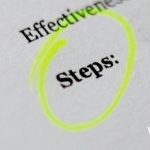Don’t think business cards are a relic of the past. Despite their low-tech nature, these cards are perfect for memorably highlighting your credentials. Although business cards remain a handy tool for employees, jobseekers may also discover a myriad of benefits from keeping a stack of these in their pocket.
If you’re looking to make your next career move, don’t just rely on your LinkedIn profile to reach the right people. Get active with business cards so that when the right opportunity comes along, you have a physical memento that gives someone the important details they need to know about your talents.
Why business cards are important
We know that business cards still prove to be a remarkable tool for professionals at every stage of their careers. But what makes them so effective? According to many high-level executives, this communication medium is the fastest and most straightforward way to share your contact details.
While most people are undoubtedly familiar with platforms like LinkedIn and Facebook, not everyone is active on social media. Meanwhile, telling someone to connect with you online isn’t the most personable way to communicate. A well-designed business card overcomes many of these hurdles.
Where to hand out business cards
Business cards are great for jobseekers because it’s easy to hand them out in most situations. While asking someone to add you on LinkedIn requires them to pull out their phone, search your name, and find the right person, passing a business card takes a matter of seconds after a quick introduction.
A job fair is also an ideal place to use business cards. When you meet professional recruiters to discuss your next career step, a business card serves as an effortless reminder about your credentials. Plus, business cards work just as well in social situations where you encounter a relevant professional contact.

What to include on a business card
Discovering the ideal business card design is a classic dilemma that even experienced professionals struggle with. With only limited space to work with, you must tailor your personal information to hit the right notes. You must also consider other design elements like business card size and colour to leave the perfect impression.
Think about your target audience to guide your choices. Creative professionals like web designers can opt for an inventive approach that showcases their talents. However, this method might not be appropriate for a more formal corporate role. Most importantly, be sure to include these details:
Contact information
Naturally, contact information is essential for your business card. Jobseekers should include their name and role to ensure the recipient knows who they are dealing with. A reliable mobile number and email address make it easy for someone to get in touch.
Portfolio and Resume
If you have an online resume, be sure to include a link to it on your business card. Creative individuals should link to their personal website so that interested parties can quickly check out their professional portfolio. Some professionals include a QR code to make the process even simpler. Think carefully about what’s most relevant to achieve your goals.
Social handles
LinkedIn may not have replaced the need for business cards, but it remains a widely used platform for professionals looking to network. By including a link to your LinkedIn profile on your business card, like-minded professionals will always know how to connect.
With your LinkedIn showcasing accomplishments, testimonials and employment history, prospective employers will quickly get a sense of your expertise. If you have a relevant side hustle, perhaps linking to an Instagram account is a quick way to showcase that you’re a motivated and enterprising worker.
Core skills
Business cards are a clever way to outline your primary skills. A double-sided business card design can feature your contact details and social handles on the front, while the back can outline a selection of appealing talents that help you stand out.
For example, a copywriter might add the specific services they specialise in, such as social media copy, press releases and technical documents. This way, if someone decides to get in contact, they already have a good idea about the jobseeker’s talents.
A memorable tagline
Don’t discount the importance of a memorable tagline. When used effectively, this short snippet of text can convey your personality, skills and professionalism and make your talents extra appealing. In essence, this tagline should capture everything you’re about.
So, where do you start? Reflect upon your target audience and consider what ideas resonate with their needs. Then, think about a unique selling point that makes you stand out. Alongside emotive language and a clever turn of phrase, getting people to reach out comes easily with a sharp tagline.
With a professionally crafted business card, jobseekers can further enhance their job search and professional networking.














